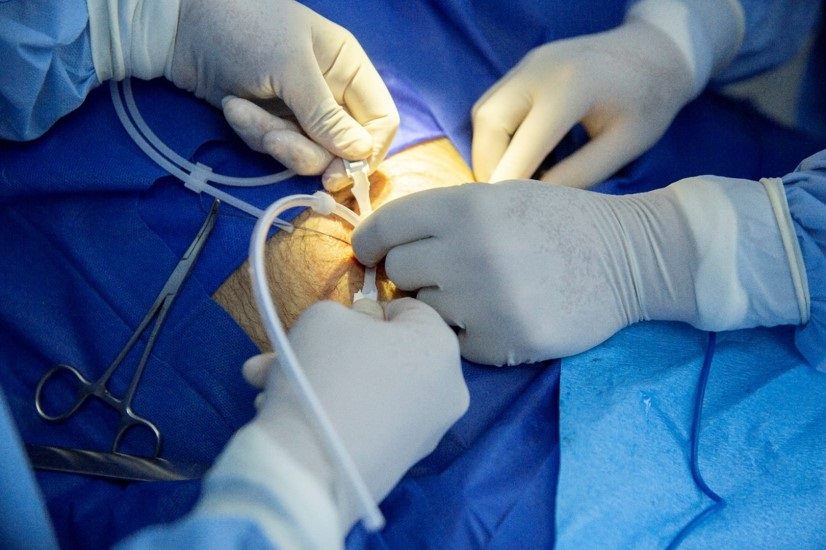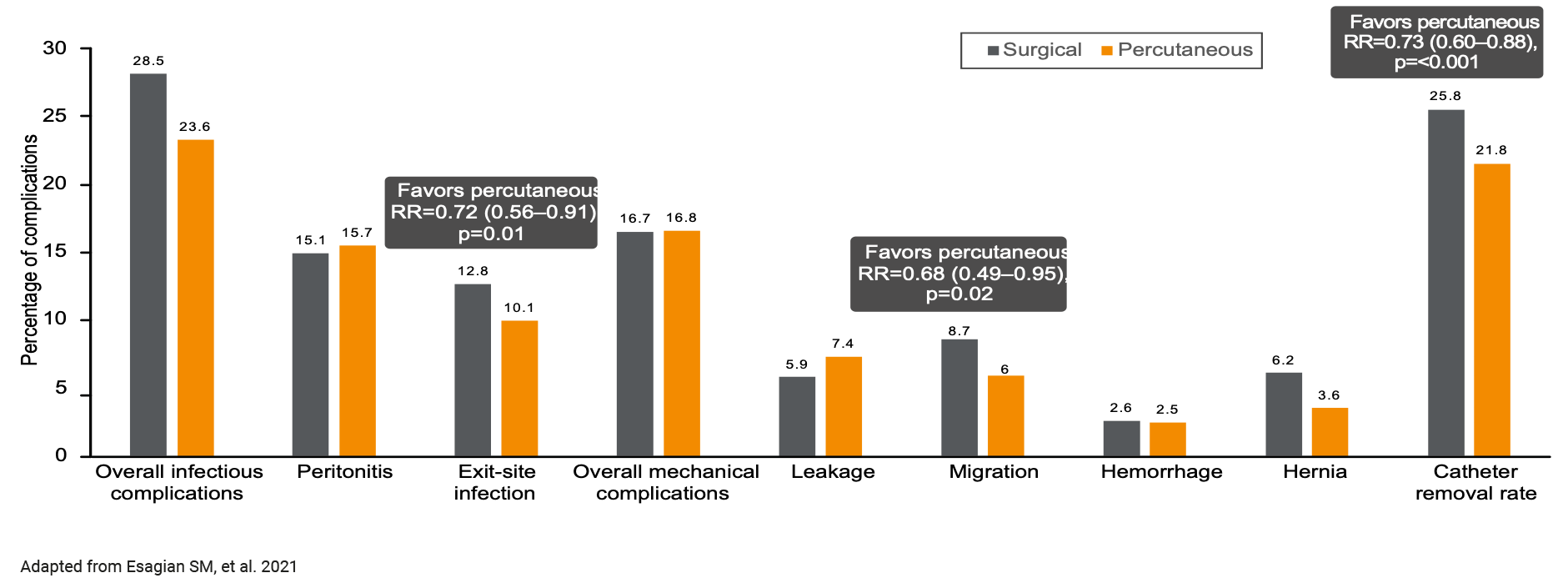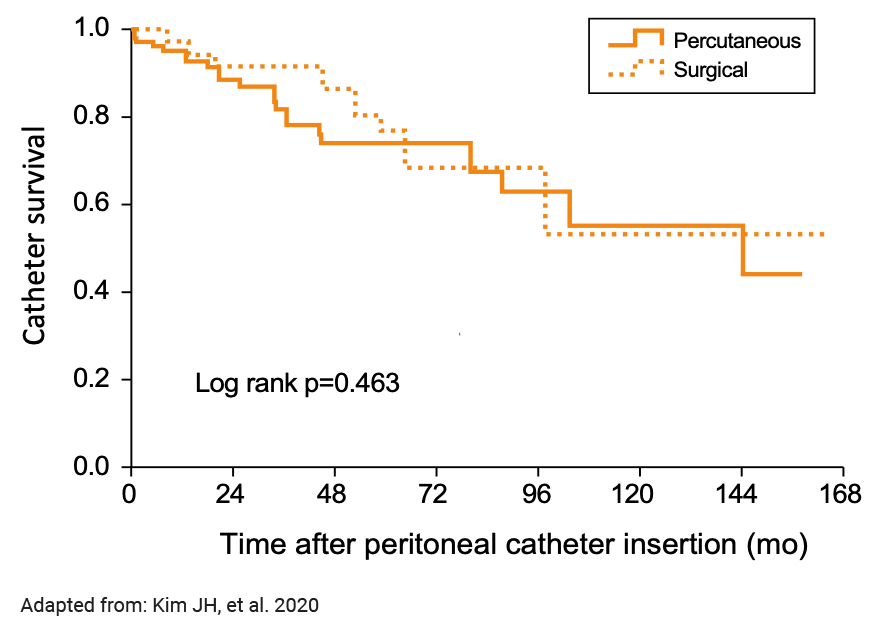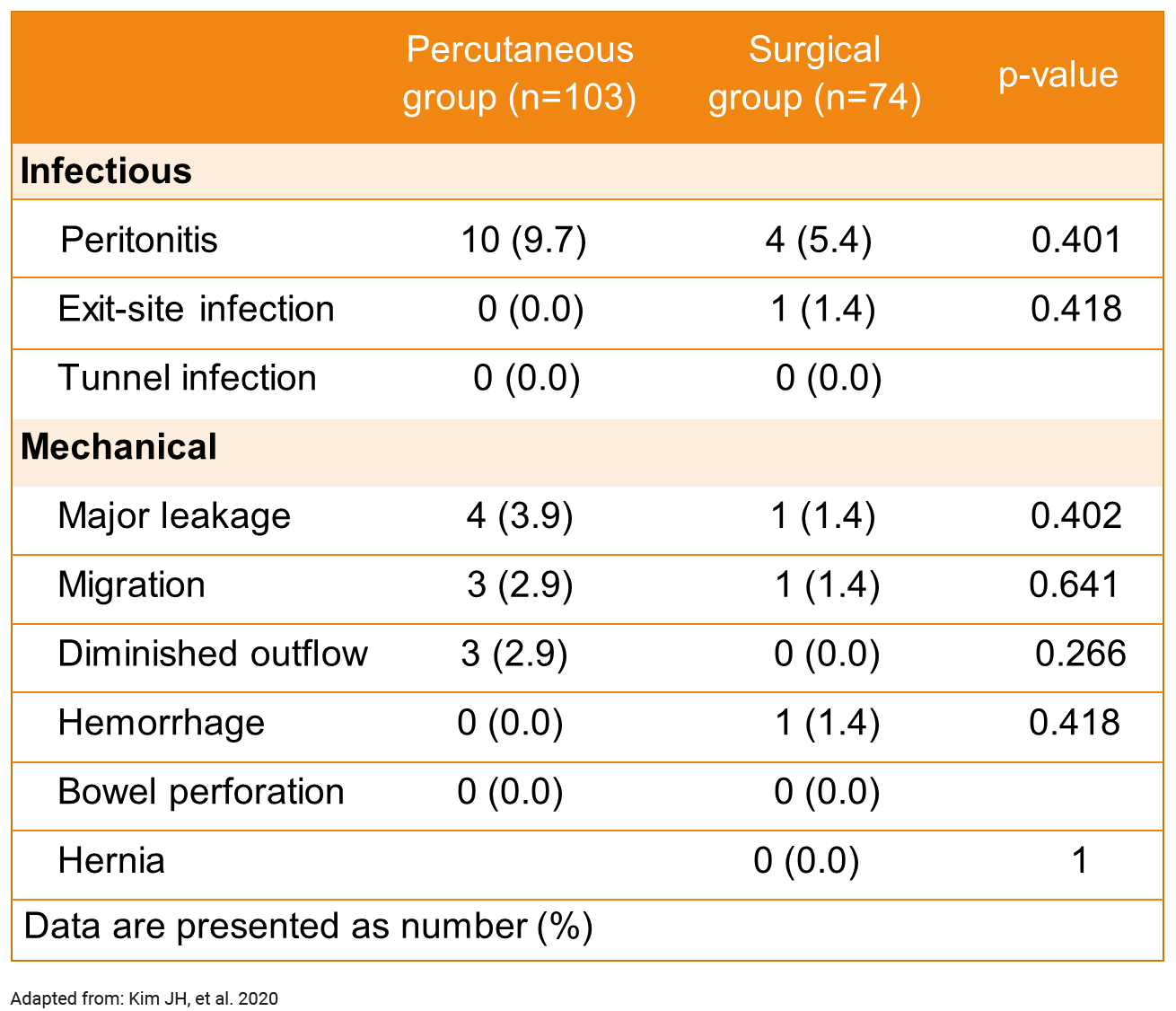Series 2

Series 1
Peritoneal Dialysis Catheter Insertion is an Essential Medical Service for Kidney Failure Patients in COVID-19 Pandemic

Series 2
A Safe Technique With Outcomes Shown to be Equivalent to—or Even Better Than—Surgically Placed Peritoneal Dialysis Catheters

Series 3
Nephrologist-Inserted Catheter Demonstrated a Higher Peritoneal Dialysis Utilization Rate and a Shorter Rate of Initiation with Lesser Complications

Series 4
Minimally Invasive Approach Technique and Reduced Dependence on Resources in Operating Theaters
Percutaneous catheter insertion

The percutaneous catheter placement technique might be performed as a bedside procedure under local anesthetics compared to surgical catheter placement, which requires theater time and general anesthetics.3
Hence, percutaneous catheter insertion is an uncomplicated operation with the advantages of quick recovery, quicker ambulation, and less delay in catheter insertion when compared to other approaches.1
Many studies validated the efficacy and safety of the percutaneous placement of PD catheters. Several systematic reviews and meta-analyses showed that percutaneous PD catheter placement is a safer technique than surgical placement.1,2,4
Percutaneous catheter insertion may result in a lower incidence of infectious complications and has similar risks of mechanical complications when compared to surgical catheter insertion2
Percutaneous PDC placement is an overall safe procedure with comparable outcomes to the surgical placement. It may potentially lead to fewer infectious complications, such as exit-site infections, catheter migrations, and catheter removal rate. There is no statistically significant difference in overall infectious complications and overall mechanical complications between the two methods.2

Literature review also revealed no difference in the safety and efficacy between the percutaneous and surgical insertions in urgent-start PD4

- Rate of catheter survival is comparable between patients who received percutaneous or surgical insertion in the first 168 months.4
- Percutaneous insertion is not inferior to surgical insertion for catheter survival (risk difference, -1.1 percent points; 95% CI, -13.3–11.1; non-inferiority margin, -15 percent points).4
PD: Peritoneal Dialysis; CI: Confidence Interval

- The infectious (peritonitis, exit-site/tunnel infection) and mechanical complications in patients showed no significant differences within 90 days after receiving percutaneous and surgical catheter insertion.4
Summary
Percutaneous peritoneal dialysis catheter placement is safe, minimally invasive, and provides equivalent or even better outcomes as compared to surgically placed peritoneal dialysis catheters.1,2
- No statistically significant difference in catheter-related problems when inserted percutaneously or surgically.1
- Percutaneous catheter insertion has similar risks of mechanical complications as compared to surgical catheter insertion.2
- Percutaneous catheter insertion may result in a lower incidence of infectious complications, namely peritonitis1 and exit-site/tunnel infection2 than surgical catheter insertion.
- No difference in the safety and efficacy between percutaneous and surgical insertion in urgent-start PD.4
Series 3
Nephrologist-Inserted Catheter Demonstrated a Higher Peritoneal Dialysis Utilization Rate and a Shorter Rate of Initiation with Lesser Complications
For a more complete overview of this module, please view the downloadable PDF here:
Boujelbane L, Fu N, Chapla K, et al. Percutaneous versus surgical insertion of PD catheters in dialysis patients: A meta-analysis. J Vasc Access. 2015;16(6):498–505.
Esagian SM, Sideris GA, Bishawi M, et al. Surgical versus percutaneous catheter placement for peritoneal dialysis: An updated systematic review and meta-analysis. J Nephrol. 2021;34(5):1681–1696.
Peppelenbosch A, van Kuijk WH, Bouvy ND, et al. Peritoneal dialysis catheter placement technique and complications. NDT Plus. 2008;1(Suppl 4):iv23–iv28.
Kim JH, Kim MJ, Ye BM, et al. Percutaneous peritoneal dialysis catheter implantation with no break-in period: A viable option for patients requiring unplanned urgent-start peritoneal dialysis. Kidney Res Clin Pract. 2020;39(3):365–372.